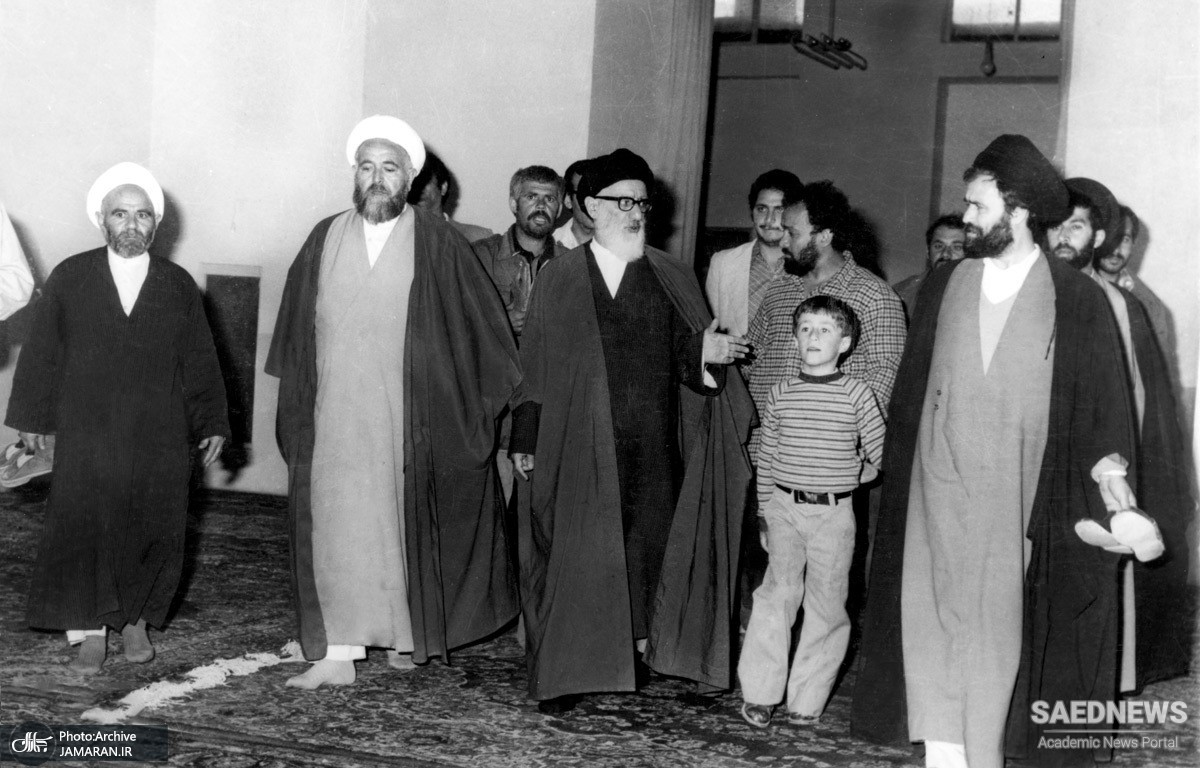Taleqani was released from prison in 1968 but barred from political activity. This period lasted for two years. In May 1970 he resumed his campaign against the Shah's reign. He pursued his political activities by organizing a mourning ceremony for Muhammad Reza Saidi, who had been murdered by the Shah's police for his political activities in collaboration with Ayatollah Khomeini. Following Taleqani's involvement in organizing Saidi's* mourning in Qiyasi Mosque in Tehran, he was arrested and imprisoned briefly. In 1971, three student followers of TaleqaniMohammad Hanif-Nezhad Saidi Mohsen, and Ali Asghar Badizadegan*founded the "Organization of People's Guerilla" (Sazeman-e Mojahedin-e Khalq). Taleqani was a prominent clerical supporter of this organization, formed essentially by young lay students and professionals. Because of his active support of this organization, he was arrested and exiled to the frontier town of Zabol near Afghanistan where he spent three years in exile, far removed from the political activities in Tehran. He returned from Zabol in 1974 and secretly resumed his active support of the Mojahedin-e Khalq Organization. By the time he had returned to Tehran, however, a major break had split the Organization. A patently Marxist branch of Sazeman-e Mojahedin-e Khalq, taking advantage of the imprisonment of the more Islamically posed faction, had redefined the ideological posture of the organization in more blatantly Marxist terms. Taleqani opposed this redefinition of the Organization. He was confronted by two chief ideologues of the breakBahram Aram and Vahid Afrashtehwho reportedly threatened his life if he publicly condemned the reorientation of the Organization. Soon after this, however, Vahid Afrashteh was arrested by SAVAK and subsequently revealed Taleqani's link to the Organization. Taleqani was arrested again and sentenced to ten years in prison. He was released after only four years, on 30 October 1978, in the wake of the Islamic Revolution.
Upon Taleqani's release from the Evin Prison, Ayatollah Khomeini sent him a message from Neauphle-le-Château on 2 November 1978, congratulating him on his long-time struggle against the Shah and calling his release an indication of "the battlement of the Shah's imaginary fortress crumbling."152 This message was, in fact, an invitation from Khomeini to Taleqani to join the former's ranks in the fragmented shape that the opposition movement would ultimately assume. At issue was Taleqani's support of Sazeman-e Mojahedin-e Khalq, of which Ayatollah Khomeini did not particularly approve. Taleqani responded immediately and favorably to Khomeini's gesture and considered his release a result of, after God's grace, the people's revolt under Khomeini's leadership. By this response, dated 8 November 1978, Taleqani tacitly but emphatically acknowledged Ayatollah Khomeini's supreme leadership of the Revolution and confirmed that he would serve under his authority.


 Taleqani in Tehran: Politico-Social Activism against the Monarchical System
Taleqani in Tehran: Politico-Social Activism against the Monarchical System














































